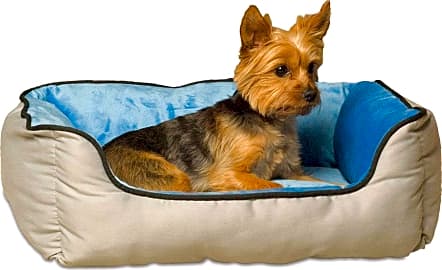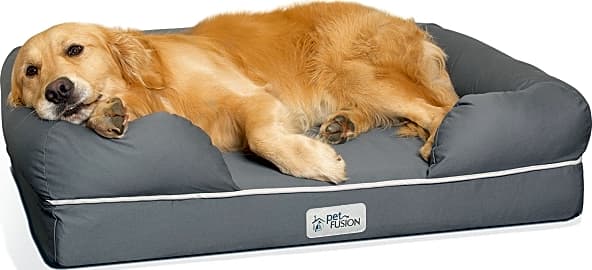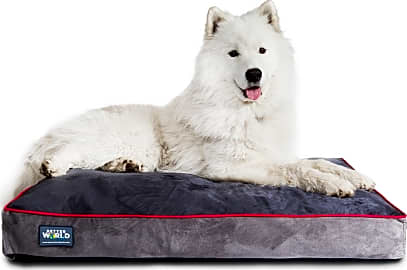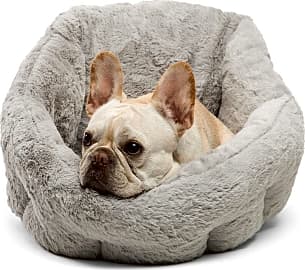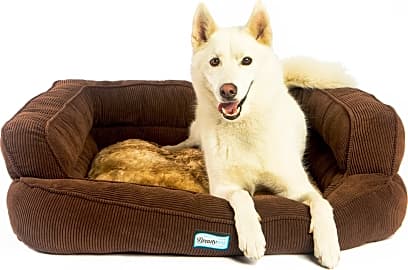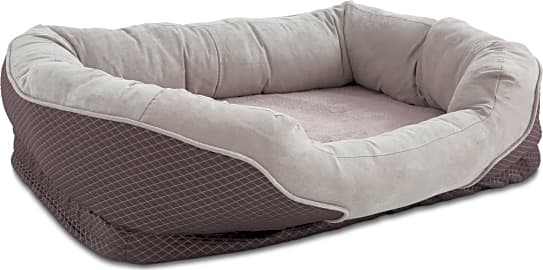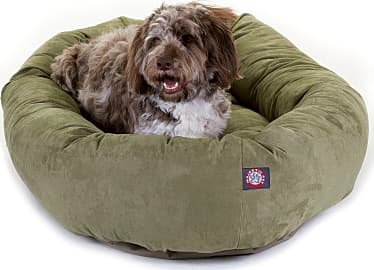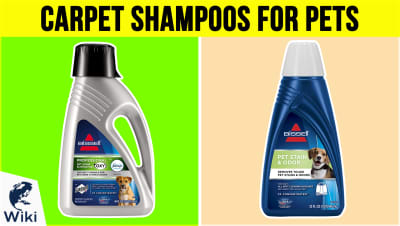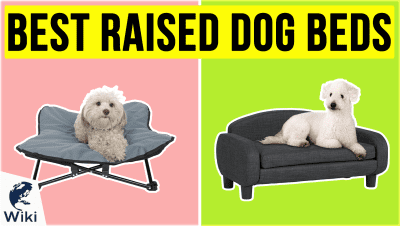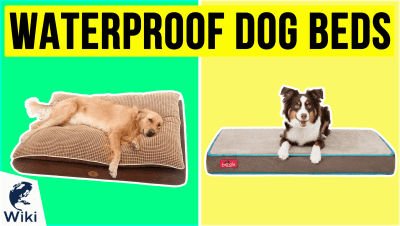The 10 Best Dog Beds

This wiki has been updated 40 times since it was first published in May of 2015. Dogs need their own comfortable place to sleep -- or else they will climb onto the bed with you, which can be cute, but not when they take up all the room. These beds provide canines with a cozy resting surface and are available in sizes to suit everything from big hounds to toy breeds. When users buy our independently chosen editorial choices, we may earn commissions to help fund the Wiki.
Editor's Notes
February 08, 2020:
We wanted to make sure that all styles of sleepers, as well as dogs of all shapes and sizes, would find an ideal resting surface in this list. It was also important that these beds would stand the test of time, since dogs spend so many of their hours snoozing each day. On that note, we like the Better World Pets Orthopedic Premium, with its firm base that holds its shape over time, and the Bully Beds BBTN, which actually comes with a 20-year no-flat warranty. We removed the Laifug Sofa, as it can sink too much and takes a while to rebound.
We looked for additional features that would boost a canine's comfort, so the K&H Pet Products Self-Warming Lounge Sleeper, which helps to trap a pooch's body heat, caught our eye. The Furhaven Luxe Lounger caught our attention too, for its ergonomic design and large surface space. However, we eliminated the Stella Orthopedic as it's a bit overpriced for such a basic design.
We made sure to add a few options for tight snugglers who like to have soft, warm fabric touching every inch of their bodies while napping. So we picked the Best Friends by Sheri OrthoComfort Deep Dish Cuddler and the Petco Peaceful Nester, each of which have high walls.
We also considered canines at various stages of life, like puppies who may still be potty training. For them, we picked the PetFusion Ultimate Lounge IBM, with its waterproof liner and water-resistant cover. Hopefully, it'll have you reaching for the carpet shampoo a bit less often. As for our geriatric friends, there is the Simmons Beautyrest Colossal 5302-002, with its low entry point that's easy for pups to get in and out of.
Special Honors
Supreme Paw Supply Bandana Dog Bed With a 100-percent cotton cover, this bed should be gentle on dogs with sensitive skin. Its bandana-inspired fabric has plenty of personality, and will look more like a decorative piece than a simple functional one. It's available in sizes small through extra large, and is machine washable for easy cleaning. supremepawsupply.com
Frontgate Bahari Pet Bed This bed has hand-woven wicker over a sturdy aluminum frame for a sophisticated look and durability. The cushion comes in several prints and colors, though it is sold separately. An exposed front makes it easy for dogs to get in and out of, while its high walls offer something to curl up against. frontgate.com
How Does a Dog Bed Work?
An additional distinction involves whether the bed's outside lining is removable, which makes them significantly easier to wash.
Okay, so if you're a pet lover who loves to spend as much time with your dogs as I do, chances are you let them sleep on the bed at some point because they're a part of your family and offer emotional support. I can't tell you how many countless nights I've experienced with all 3 of my standard poodles huddled into nearly all the corners of my full-sized mattress, forcing me to sleep in the middle of the bed or in some pretzel-shaped position just to make sure I don't disturb them. Granted, that isn't the way all pet owners behave, but a dog's comfort is an important thing to consider. For that reason, a bed specifically designed for your furry friend will give him a place to call his very own when he isn't planning to sleep all over you.
The key difference between a dog bed and a human bed is that the dog will be using that surface as a couch and a chaise lounge. Any dog bed will become an indoor pet's little corner of the world, a cushioned space where he can clean himself and keep an eye on his toys. Most dog beds come with an outer lining made from a variety of materials that include cotton, polyester, inexpensive suede, or even leather. The outer lining typically fits around several inches of foam or some other type of filling. Ideally, the inside filling is resilient, retaining its shape regardless of the dog's weight or how often the bed is used.
Many popular dog beds are both water-resistant and machine-washable, as the dog is certain to drool, drip, or shed all over its surface. An additional distinction involves whether the bed's outside lining is removable, which makes them significantly easier to wash. The majority of dog beds are light, mobile, and some are constructed with a cushioned border that allows the dog to rest his head as if that border were a pillow. Orthopedic beds are generally designed without a border. This is done to ensure that the dog's body doesn't feel cramped. It is also done so that a dog with arthritis never has to strain in order to get into the bed.
What Do I Need to Know About a Dog Bed Before I Buy?
The most important thing to consider before purchasing a dog bed is what your canine's needs are. There are many beds available on the market geared for dog of all shapes and sizes. At the end of the day, you want to look into purchasing a bed that fits your dog in the same way your dog fits you.
The most important thing to consider before purchasing a dog bed is what your canine's needs are.
If your dog is older or arthritic, there are a wide range of orthopedic beds, many of which are designed to alleviate muscle pain, while ensuring your dog doesn't have to jump or lift its hind legs in order to step onto the mattress. If your dog tends to chew, look into a bed that's made out of durable materials. If he or she tends to mark, you'll want to look into a liner that's water-resistant or that allows you to place your own liner around the mat.
Familiarize yourself with the bed's washing instructions and make a decision based on that information. Though not every dog bed can be handled in this way, the majority of dog beds are built around a cushion, so you can simply remove their outer linings and place them into your washing machine with the rest of your laundry.
On a final note, you should always make it a point to research the dimensions of each bed. This is especially significant when it comes to larger dogs, many of which require a wide surface to stretch themselves out as they rest.
A Brief History of The Dog Bed in America
One might argue that the dog bed has been in existence ever since the introduction of the term "man's best friend." Officially speaking, however, a craftsman named John G. Bins received the first-ever U.S. patent for a dog bed back in 1935.
Ironically, words like bolster, filling, and even oblong shape continue to appear in the manufacturers' descriptions of the product to this day.
Bins' original application reads like a blueprint of the dog bed as we know it. Ironically, words like bolster, filling, and even oblong shape continue to appear in the manufacturers' descriptions of the product to this day.
Changes since that time include the addition of denser materials to keep an average bed from falling apart. The invention of memory foam, for example, has kept a variety of dog beds from going flat. Most dog beds need to be washed at least six times a year and a lot of mongrels tend to chew, paw and pull at frayed materials. The most efficient dog beds have done away with delicate fabrics entirely. Finally, the rise of ergonomic beds has caused a major shift in the industry, as well.


